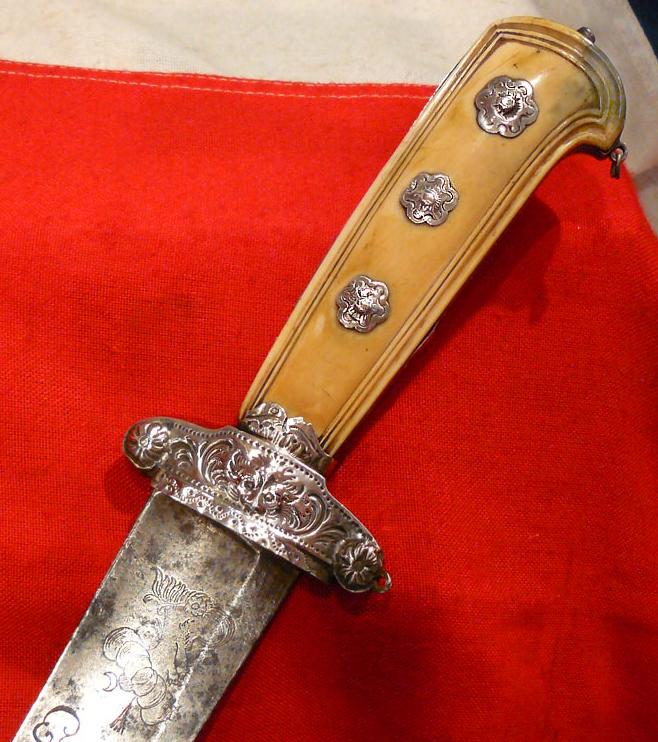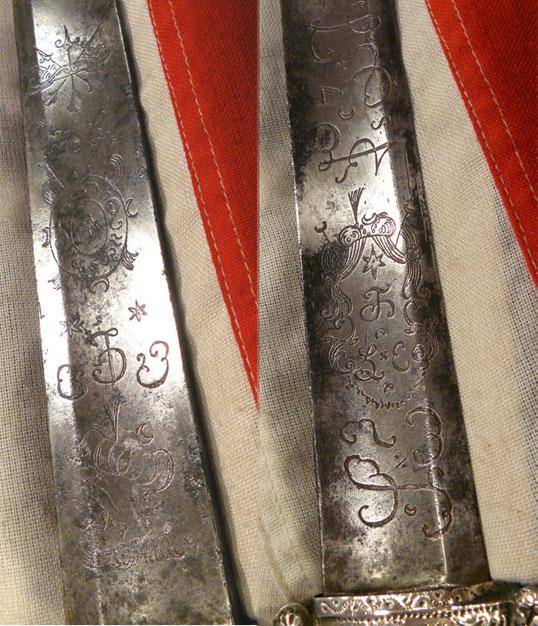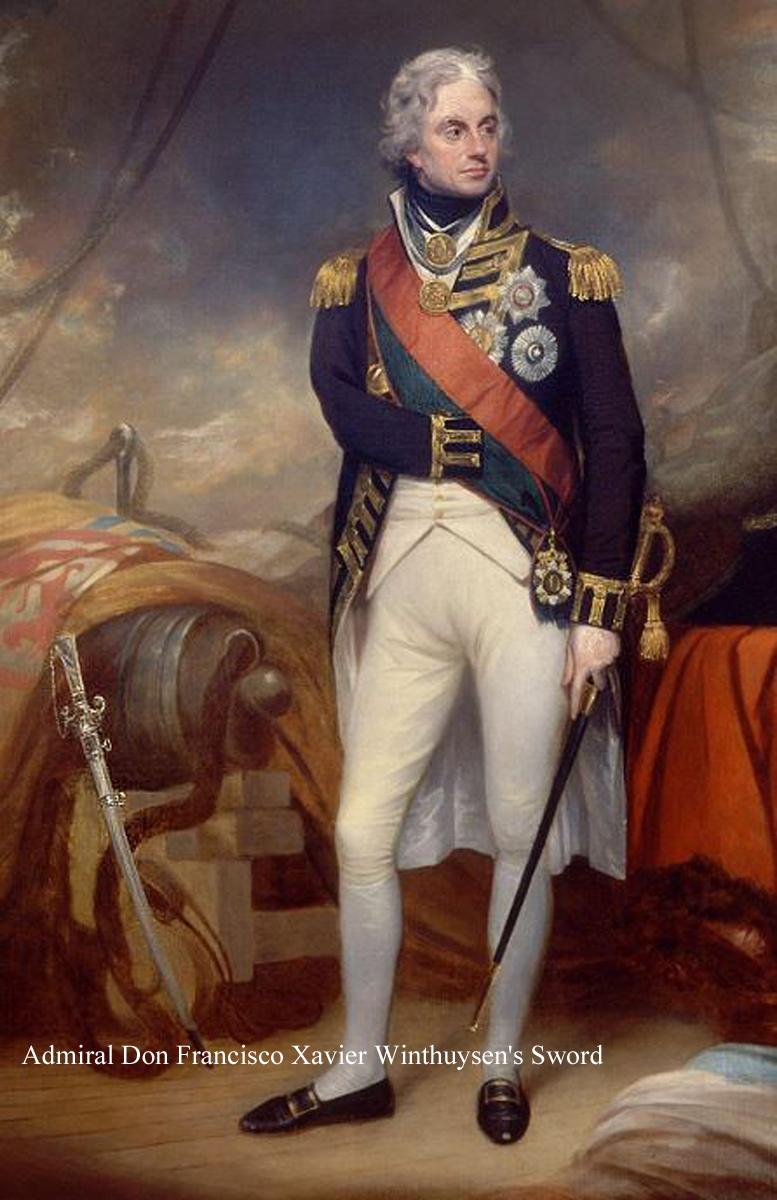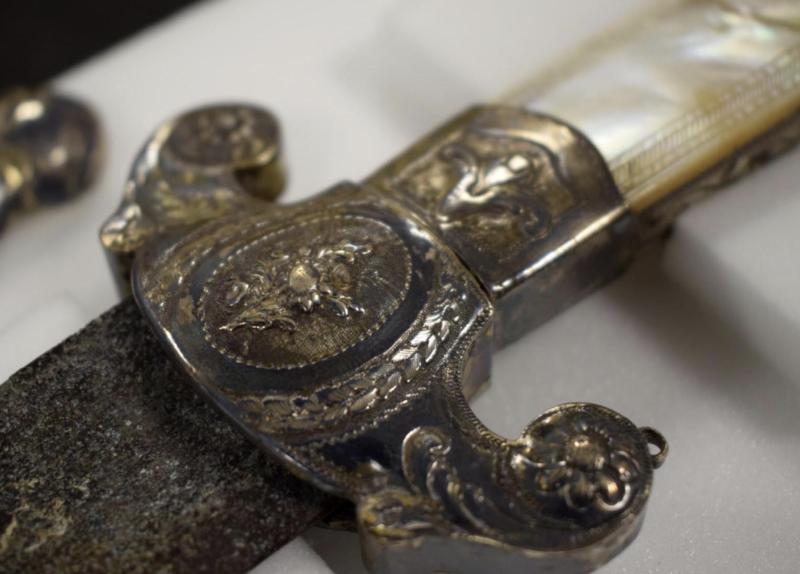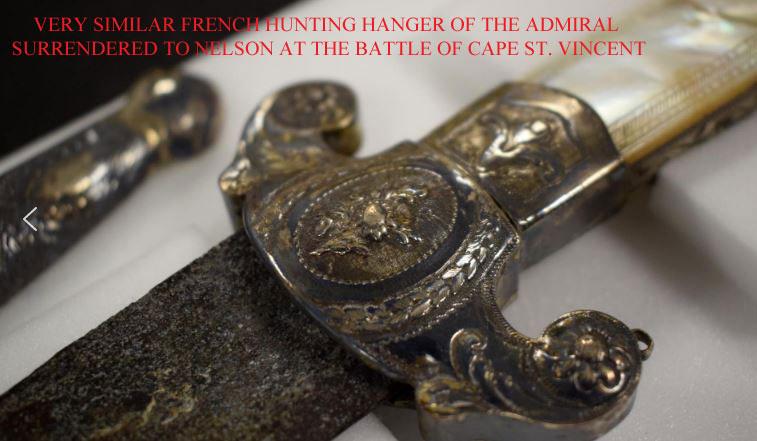A Fabulous Solid Silver Mounted 'Naval' Captain or Admirals Sword, Near Matching Admiral Don Francisco Xavier Winthuysen's Sword, That Was Surrendered to Commodore Nelson at the Battle of Cape St Vincent in 1797
Superb French hunting hanger with carved hilt with fancy solid silver crossguard and mounts bearing French hallmark with pair of carved grip plates held with fancy flower head silver rivets and engraved silver rim edging. With superbly engraved blade bearing stunning mystical talismanic and cabbalistic engravings including the portrait bust of an Ottoman Grand Sultan. It was written centuries past that a fine blade might be engraved with; "a talisman to make one beloved, to defeat the ill wishes of all enemies". They could be a number or combination with a cabbalistic meaning known only to the owner and the magician who sold him the spell. The number might be, for example, 1441, thought to be a combination of the number 7, a specifically lucky number,
From a collection of very fine surrendered swords from senior officer's of French and Spanish warships that fought against Nelson's fleets.
An incredibly similar sword surrendered to Commodore Nelson at the battle of St Vincent 1797 that of Rear-Admiral Don Francisco Xavier Winthuysen the Spanish admiral who died aboard the San José that sword is now in Norfolk museum collection. See photo 9 in the gallery that shows the extremely similar French silver hilt mount close-up of the Spanish Admiral’s sword in the Norfolk Museum unpolished that shows it may have been made by the same French maker.
We also show the sword surrendered to Nelson at the battle of St Vincent, and standing next to Nelson painted by Sir William Beechy
Sir William Beechey (1753 - 1839)
Location:Norwich Castle.
The Battle of Cape St. Vincent (14 February 1797) was one of the opening battles of the Anglo-Spanish War (1796–1808), as part of the French Revolutionary Wars, where a British fleet under Admiral Sir John Jervis defeated a greatly superior Spanish fleet under Admiral Don José de Córdoba y Ramos near Cape St. Vincent, Portugal.
After a rendezvous with Jervis in the Atlantic off Cape St. Vincent on the previous day, Nelson on February 14, 1797, found himself sailing in mist through a Spanish fleet of 27 ships. The Spaniards were sailing in two divisions and Jervis planned to cut between the two and destroy one before the other could come to its assistance. But he had miscalculated, and it became clear that the British ships would not be able to turn quickly enough to get into action before the Spanish squadrons closed up. Without orders from Jervis, Nelson hauled out of line and attacked the head of the second Spanish division. While the rest of Jervis’ fleet slowly turned and came up in support, Nelson held the two Spanish squadrons apart, at one time fighting seven enemy ships. The efficiency of British gunnery was decisive, and he not only boarded and captured one enemy man-of-war but, from her deck, boarded and took a second.
The Battle of Cape St. Vincent won for Jervis the earldom of St. Vincent and for Nelson a knighthood, which coincided with his promotion by seniority to rear admiral. His first action in command of a major independent force, however, was disastrous. In the course of an assault on Tenerife, a grapeshot shattered his right elbow, and back in his flagship the arm was amputated.
Overall nice condition with some age pitting to blade.
Every single item from The Lanes Armoury is accompanied by our unique Certificate of Authenticity. Part of our continued dedication to maintain the standards forged by us over the past 100 years of our family’s trading, as Britain’s oldest established, and favourite, armoury and gallery
Code: 24593
1395.00 GBP



